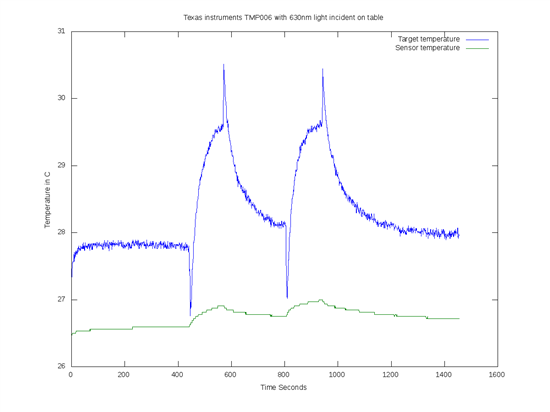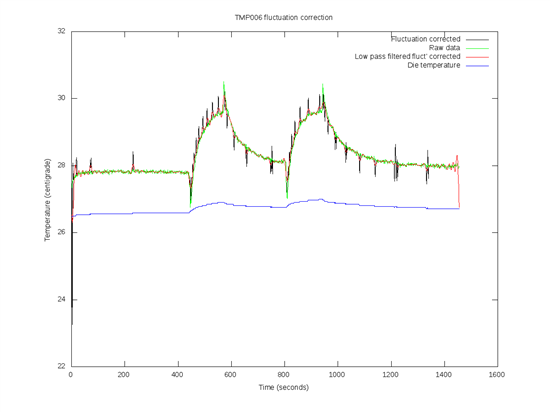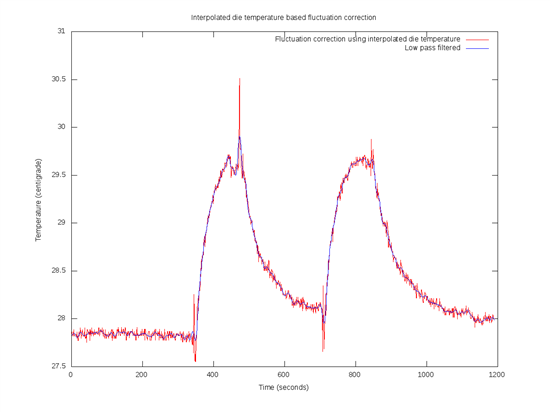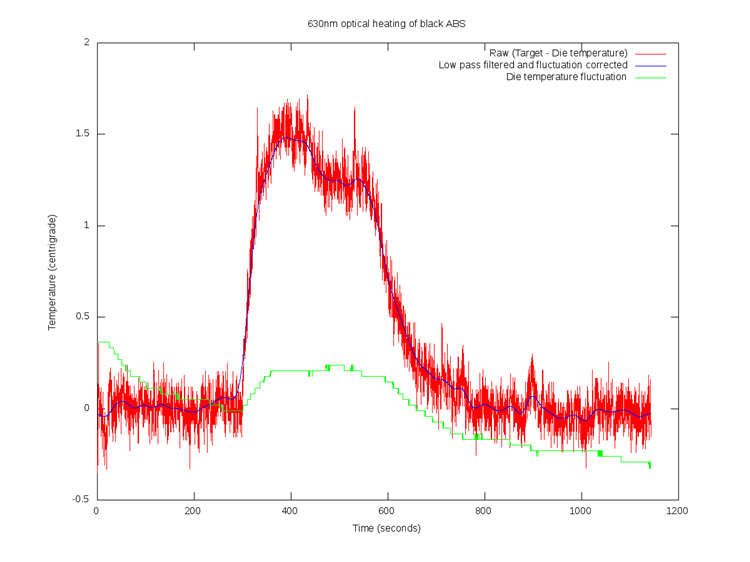I am developing a non contact flowmeter device using 630nm illumination of a target from an LED through
an optical fibre. We use approximately 250mw optical power to heat the target, and the eventual system will
use modulated LED intensity to induce a constant temperature increase on the target. The optical power
required will correlate with flow.

During basic testing with a TMP006 evaluation board we have noticed spikes on the output each time the
illumination is turned on/off. We suspect this is due to photovoltaic effects from the illumination light reflecting
between the IC and the PCB and striking the "bottom" side of the IC. This only seems to occur when the
illumination intensity is rapidly changed - e.g. a 0 to100mw slew over 10 seconds or similar with our setup
(approximately 10% of input light is reflecting and hitting the sensor).
Could anyone advise on the possible causes of this effect, and if the photovoltaic hypothesis is credible.
What steps could we take to mitigate the spiking apart from reducing the optical power slew rate.




